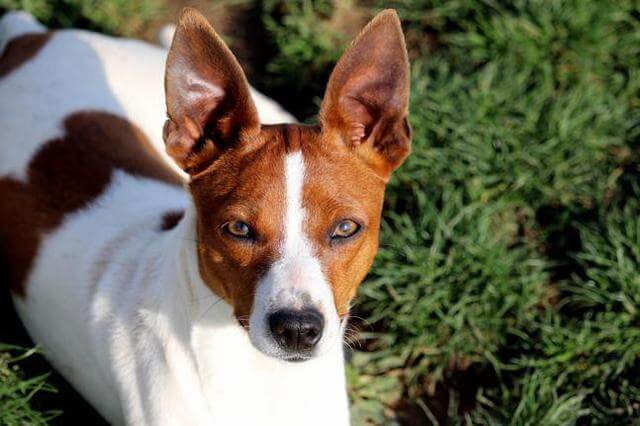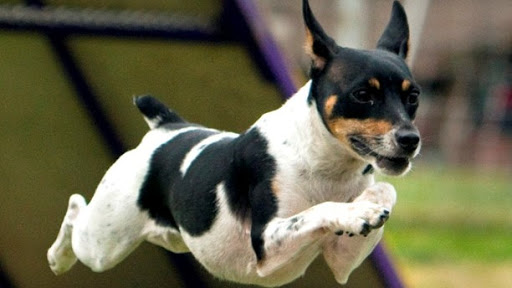Ret terrier is a type of hunting terrier. Small to medium size. An active dog with well-developed muscles. Was bred for baiting rats and agricultural work. As a versatile companion dog, this dog can hunt rats and other pests as well as small game. This is a compact, wiry dog of a party color; small and medium-sized individuals are the embodiment of elegance and grace, combining speed, power and balance.
History
The earliest known record of a rat-catcher dog is the Hatch, whose remains were recovered from the ship Mary Rose, the flagship of Henry VIII, which sank in 1545 and re-raised in 1982. It is believed that Hatch was a mongrel. , and was brought aboard to control the rat population.
The breed’s name comes from the occupation of its early ancestors, brought to the United States by working-class British migrants, as dogs were used to bait rats. For the most part, however, they were built for speed. Their speed is used to combat parasites and to hunt small game such as squirrels and hares. After the 1890s, when this type of breed became popular in the United States, they were mated to hounds, Italian greyhounds, and Manchester terriers. Many of the rat terriers were indistinguishable from the small, mixed-breed hunting dogs known as “fiestas.” The smaller species separated very early from the rat terrier line, with the registration of the toy fox terrier in the UKC since 1936.
Rat terriers were cherished as loyal hunting companions and effective killers of parasites on American farms in the 20th century: as a result, they were one of the most popular types of dogs from the 1920s to the 1940s. However, the widespread use of chemical pesticides and the growth of commercial farming have led to a sharp decline in the breed since the 1950s. Supporters of the breed retained the pedigree, which led to the emergence of the modern rat terrier.
The genetic diversity of the rat terrier contributed to the overall health, intelligence, and health of the breed. Most modern breeds were bred from several founding dogs and then bred from a closed gene pool. In contrast, the Rat Terrier has benefited from a long history of cultivation with regular outcrossing to bring in beneficial traits and genetic variation.
Nowadays, the rat terrier is becoming popular not only as a pet but also as a working dog in several fields.
Their affectionate and calm nature, as well as their small size, have made them popular as service dogs in hospices, in the treatment of depression, in childcare, and other human care jobs.
Police departments have begun using them as smuggling dogs as their intelligence level reduces training time to three weeks, much shorter than traditional police breeds. In addition, their small size allows them to search cars, houses, and prison cells without causing the serious damage that a large German Shepherd or another traditional police breed can do when searching a car, and reduces the chances of large financial calculations if nothing is done during the inspection.
One of the sports of owning the American Rat Terrier was reported to be making a competitive wager about whose dog could kill the most mice or rats in a given amount of time. One terrier was released into the barn and killed 2501 rats in 7 hours.
Appearance
The weight of a Rat Terrier can be from 4.5 to 11 kilograms, and its height is from 25 to 45 centimeters at the withers. The miniature variety (less than 33 cm at the withers, as defined in the FNC standard) is becoming more popular as a pet and companion dog but is still a hunting dog nonetheless. The standard reports size as “small to medium”, a miniature variety designed for hunting in narrow burrows where rodents hide.
There is also a larger type of “decker” or “giant decker”, often exceeding 11 kilograms. It was named after breeder Milton Decker, who created a larger hunting companion. This breed is recognized by the National Rat Terrier Association (NRTA). The United Kennel Club and the American Kennel Clubs do not recognize the Decker as a separate breed but consider them an in-breed type of Rat Terrier. Also, only the NRTA recognizes a separate toy variety of Rat Terriers, weighing less than 4.5 kilograms.
The National Rat Terrier Association continues to classify the Teddy Roosevelt Terrier as a species of Rat Terrier. In the 1970s, a hairless mutation emerged and spread among the Rat Terrier population. After a period of development, this lineage led to the emergence of the American Hairless Terrier, recognized as a separate breed by several canine organizations.
The Rat Terrier can have a variety of coat colors. The classic color is a solid spot on a black background with a tan (known as the black tricolor), chocolate, red (ranging in shades from pale gold to dark red), blue, isabella (pearl), lemon, and apricot colors are also quite common. They can be three-colored or bi-colored, always with some white. The sable can cover any of these colors. The so-called badger coloring, when with the main black or brown color, the red markings on the muzzle merge and reach the level of the forehead, the red color completely covers the legs and can transfer to the belly, is also acceptable. Specks are usually seen on the white patches of the coat or on the skin itself. Brindle, currently banned by the main breed standards, is considered by some to be the traditional color of the Rat Terrier, and there is a growing movement for this color to be the standard. The marbled color in the breed is thought to be the result of recent crosses with other breeds and is rejected by most Rat Terrier breeders due to health problems associated with this gene.
The ears are usually erect, but can also be semi-erect or envelope, all of which contribute to an intelligent, alert expression of the muzzle. The tail is traditionally docked to a length of 5-7 centimeters, but the bobtail gene is very common in rat terriers and can lead to puppies with different tail lengths. Today some breeders prefer a natural, uncropped tail, which is accepted in breed standards.
Personality
The Rat Terrier breed is a very lively dog, with a cheerful, a little eccentric character. It can be an excellent companion for almost any family, regardless of the number of its members. This breed treats children well, loves to spend time with them in active games and other entertainment.
Differs in great devotion to its owner and family, and can adapt to a variety of living conditions, including due to its small size. The Rat Terrier is a very quick-witted and quick-witted dog that understands commands well and loves to learn.
However, his active nature and a large amount of energy must be directed in the right direction, and the training process must be built in such a way that the dog constantly feels interested in him. Accordingly, monotony is best avoided. Also, a large amount of energy requires spending at least an hour a day outside, while allowing the dog to reach its potential.
If this is not done, she will become sad, or, on the contrary, overly active at home and destructive. The Rat Terrier breed treats strangers with friendliness, but still somewhat restrained; upbringing also plays an important role. In our latitudes, with the arrival of winter on the street, it is better to dress the dog in overalls.
They recognize themselves as watchmen if they live in a private house with their own yard, but this watchman will turn into a friendly dog as soon as your friend closes the gate behind him, and the dog sees your disposition towards the person. The Rat Terrier has hunting instincts, which is quite natural, given his past, and therefore, if he lives in a private house, he will certainly hunt rats and any other small animals, including, for example, moles. But it is quite possible to accustom him to life with a cat under one roof, and even more so if you do it from an early age.
Characteristics & Behavior
Small Rat Terriers adapt equally well in an apartment, private house, or on a farm. Year-round keeping outdoors in the middle climatic zone is impossible due to the dog’s lack of undercoat and sensitivity to cold. Owners of private houses should also take into account that the rats are clever in digging and jumping over small fences. To maintain a good shape, the dog needs a daily active period of about an hour.
Owners prefer to feed Rat Terriers with high-grade foods above premium for small breeds of dogs that lead an active lifestyle. It is worth noting that some rat catchers suffer from food allergies and sensitive digestion, and are prone to gaining excess weight.
Care
Grooming a small, smooth-haired dog is not troublesome. It is enough to periodically brush the coat with a soft brush or mitt to reduce the amount of hair loss in the house. They bathe once every 7-10 days or less. It is important to trim the nails every 3-4 weeks. Ears are cleaned of excess sulfur as it accumulates. They monitor the condition of the teeth.
Health

Rat terriers are small, but very hardy and strong dogs. Life expectancy is 15-19 years. Only in recent years, with the growth and popularity, some health problems that are hereditary have begun to appear:
- Dislocation of the patella;
- Cardiovascular diseases;
- Diseases of the pancreas;
- Dysplasia of the hip joint;
- Ophthalmic diseases;
- Legg-Calle-Perthes syndrome.




